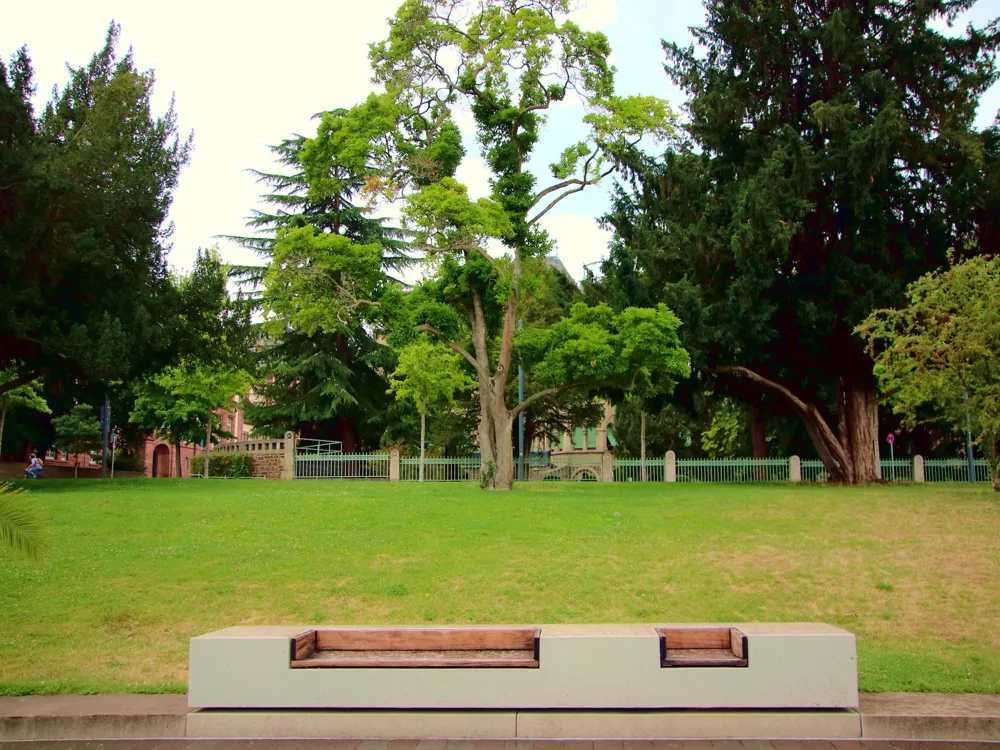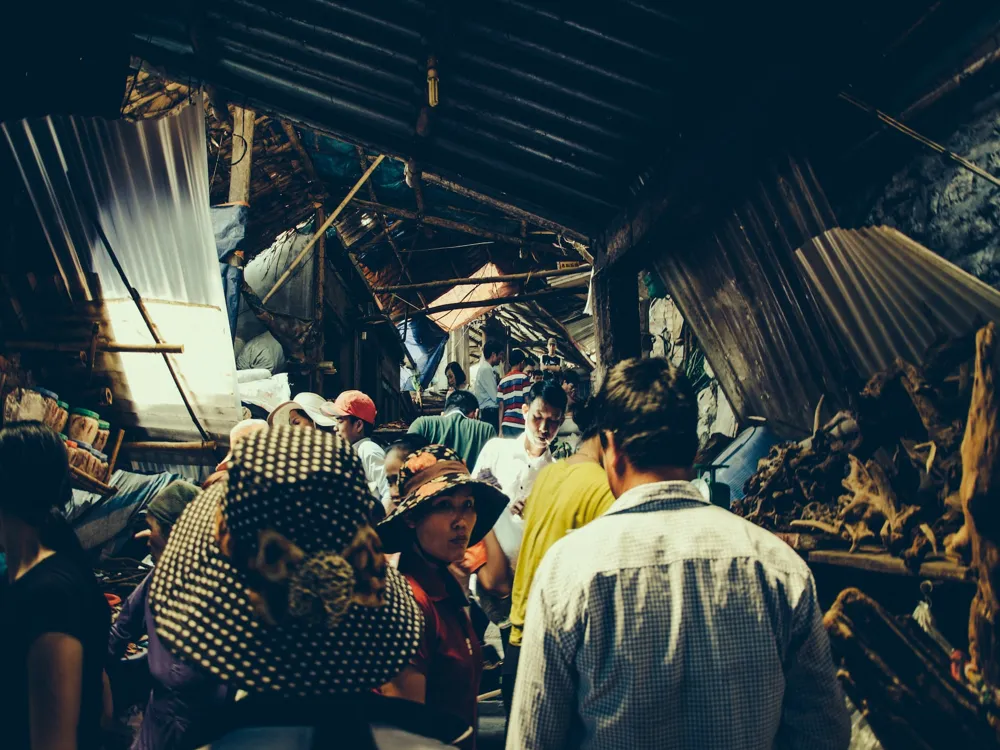The Hai Ba Trung Temple, located in the heart of Hanoi, Vietnam, stands as a remarkable testament to the country's rich history and cultural heritage. This temple, dedicated to the Trung sisters - Trung Trac and Trung Nhi - is not just a religious site but also a symbol of resilience and patriotism. The sisters are celebrated as national heroines who led a rebellion against Chinese rule in the first century AD. Their legacy is deeply ingrained in the Vietnamese consciousness and is a source of inspiration for generations.
The story of the Trung sisters is a blend of history and legend. Born into a military family, they were well-versed in martial arts and were deeply affected by the suffering of their people under foreign rule. When their father, a noble lord, was executed by the Chinese, the sisters decided to rise against the oppression. In 40 AD, they successfully led a rebellion that established a brief independent state. However, their reign was short-lived as the Chinese army soon reclaimed control. Rather than surrender, the Trung sisters chose death, becoming martyrs for the cause of freedom.
Their temple in Hanoi is not only a place of worship but also a site for cultural education and national pride. Visitors come here not just to pray but also to learn about Vietnam's history and the indomitable spirit of its people. The temple, through its architecture and the stories it tells, offers a window into the past and a reflection on the values that have shaped Vietnamese society.
As you step into the temple, you are transported back in time. The architecture, the altars, and the relics each tell a story of bravery, sacrifice, and the unyielding desire for independence. The temple serves as a reminder of the sacrifices made by the Trung sisters and many others in the long history of Vietnam's struggle for sovereignty.
The architecture of Hai Ba Trung Temple is a splendid representation of traditional Vietnamese temple design, blended with unique elements that pay homage to its historical significance. The temple's structure is an intricate tapestry of cultural symbolism and architectural ingenuity, offering insights into Vietnam's past and its artistic heritage.
The main gate of the temple is an imposing structure, often adorned with intricate carvings and traditional Vietnamese motifs. It serves as a symbolic gateway between the mundane world and a sacred space, setting the tone for the spiritual experience within. As visitors pass through the gate, they enter a courtyard that leads to the main temple area. This transition from the bustling streets of Hanoi to the serene ambiance of the temple is almost palpable.
Inside, the temple is divided into several sections, each serving a specific purpose in the worship and commemoration of the Trung sisters. The central hall is the heart of the temple, where the altars dedicated to the sisters are located. These altars are often adorned with offerings, incense, and candles, creating an atmosphere of reverence and solemnity.
The architecture is characterized by its wooden beams and columns, intricately carved with dragons, phoenixes, and other mythical creatures - symbols of strength and nobility in Vietnamese culture. The roof of the temple, with its upturned edges, is particularly notable. This style is not just aesthetically pleasing but also serves practical purposes, such as facilitating rainwater drainage and providing shade from the tropical sun.
The use of color in the temple is also significant. Red, symbolizing happiness and good fortune, is prominently featured, contrasting with the darker tones of the wood. Gold accents, used to highlight carvings and inscriptions, add a sense of divinity and respect to the environment.
In the temple's surroundings, gardens and ponds create a tranquil setting, providing a space for contemplation and reflection. These natural elements are integral to the temple's design, emphasizing the harmony between man, nature, and the spiritual world.
Visitors to Hai Ba Trung Temple should be mindful of local customs and traditions. Dress conservatively, covering shoulders and knees, as a sign of respect in this sacred space. It is also customary to remove shoes before entering certain areas of the temple.
The temple can be visited year-round, but certain times offer a unique experience. Visiting during traditional Vietnamese festivals, especially during the Lunar New Year, provides a glimpse into vibrant cultural celebrations. However, be prepared for larger crowds during these times.
While photography is generally allowed, it's important to be respectful and avoid disturbing worshippers. Always ask for permission before taking photos of people, and be aware of areas where photography might be restricted.
Take the time to understand the historical and cultural significance of the temple and the Trung sisters. This knowledge will enrich your visit and provide a deeper appreciation of the site.
Consider engaging a local guide to gain more insight into the temple's history, architecture, and cultural relevance. Guides can provide fascinating details that are not always evident at first glance.
Reaching Hai Ba Trung Temple in Hanoi is relatively straightforward, given its location in the city. For international visitors, the most common starting point is Noi Bai International Airport. From the airport, several options are available:
By Taxi: Taxis are readily available at the airport and are a convenient way to reach the temple directly. The journey takes about 45 minutes to an hour, depending on traffic.
Public Transportation: For those looking for a more economical option, Hanoi's public transportation system offers buses that connect the airport to various parts of the city. Visitors can take a bus to the city center and then a short taxi or bus ride to the temple.
Ride-Sharing Services: Ride-sharing apps like Grab are popular in Hanoi and can be a convenient and cost-effective way to travel directly to the temple.
For those already in Hanoi, the temple is accessible by city buses, taxis, and even by walking from certain central locations. The temple's central location in Hanoi makes it a convenient inclusion in any travel itinerary within the city.
Overview of Hai Ba Trung Temple in Hanoi
Architecture of Hai Ba Trung Temple
Tips When Visiting Hai Ba Trung Temple
Respecting Local Customs and Traditions
Best Times to Visit
Photography Guidelines
Understanding the Cultural Significance
Engaging with Local Guides
How To Reach Hai Ba Trung Temple
Hai Ba Trung Temple
Hanoi
₹ 15,260 onwards
View hanoi Packages
Weather :
Tags : Temple
Time Required : 30 minutes
Planning a Trip? Ask Your Question
Hanoi Travel Packages
View All Packages For Hanoi
Top Hotel Collections for Hanoi

Private Pool

Luxury Hotels

5-Star Hotels

Pet Friendly
Top Hotels Near Hanoi
Other Top Ranking Places In Hanoi
View All Places To Visit In hanoi
View hanoi Packages
Weather :
Tags : Temple
Time Required : 30 minutes
Planning a Trip? Ask Your Question
Hanoi Travel Packages
View All Packages For Hanoi
Top Hotel Collections for Hanoi

Private Pool

Luxury Hotels

5-Star Hotels

Pet Friendly






















